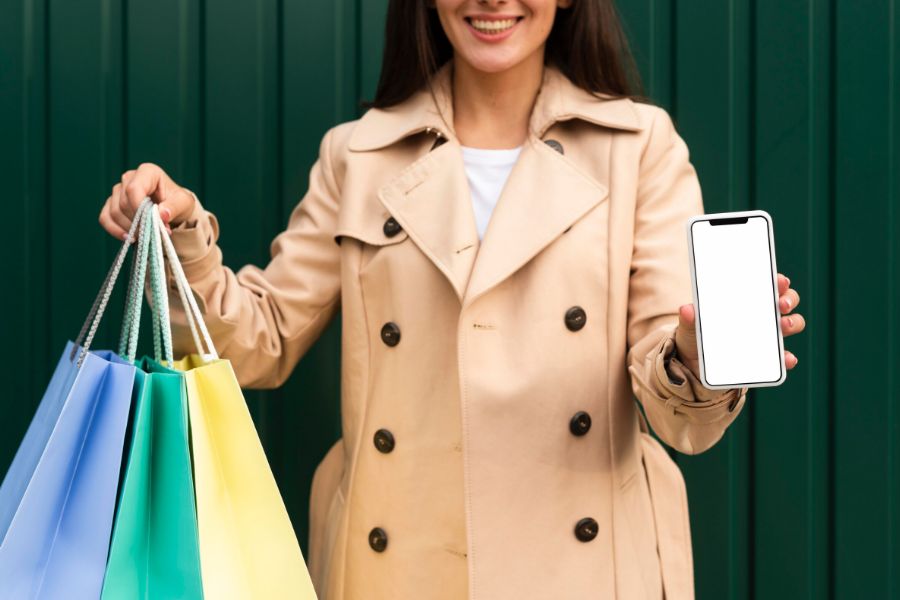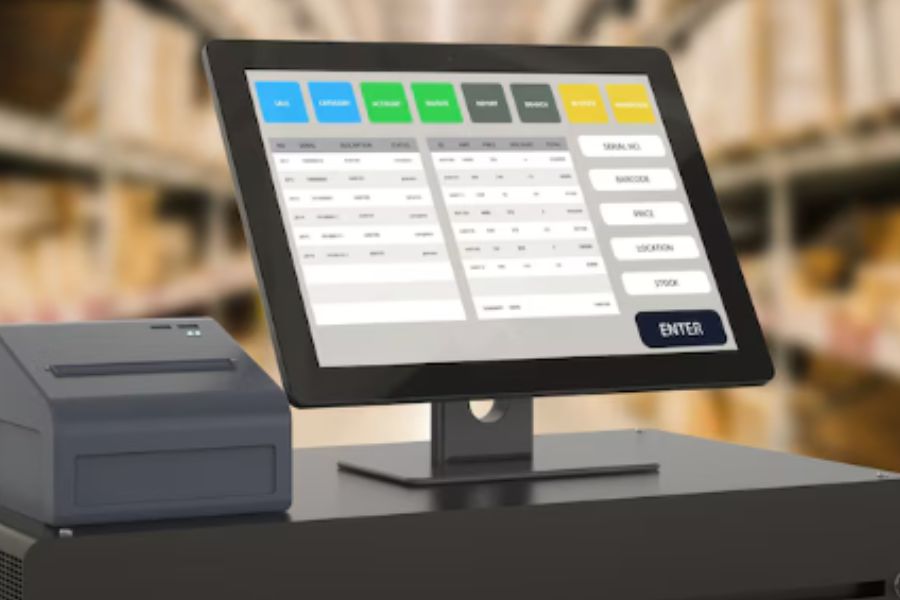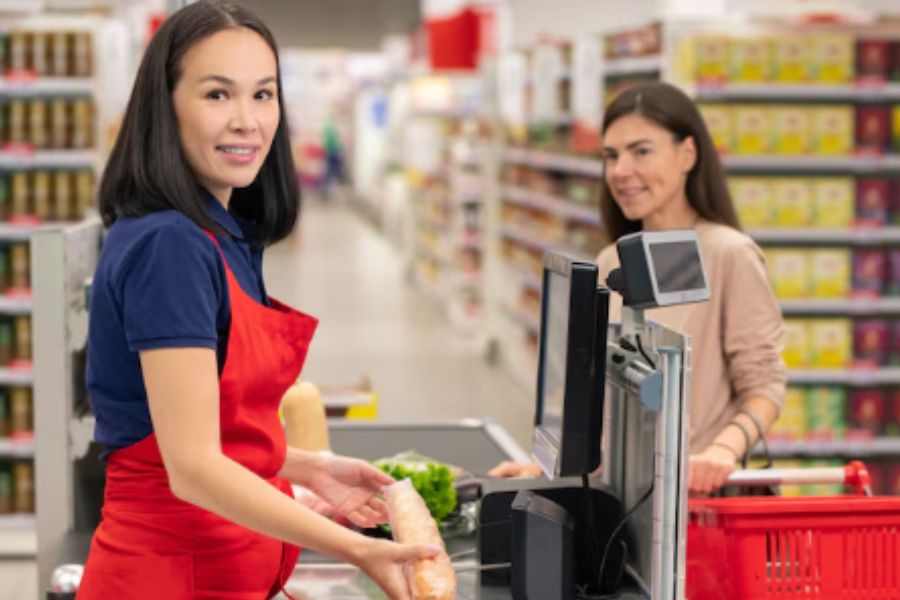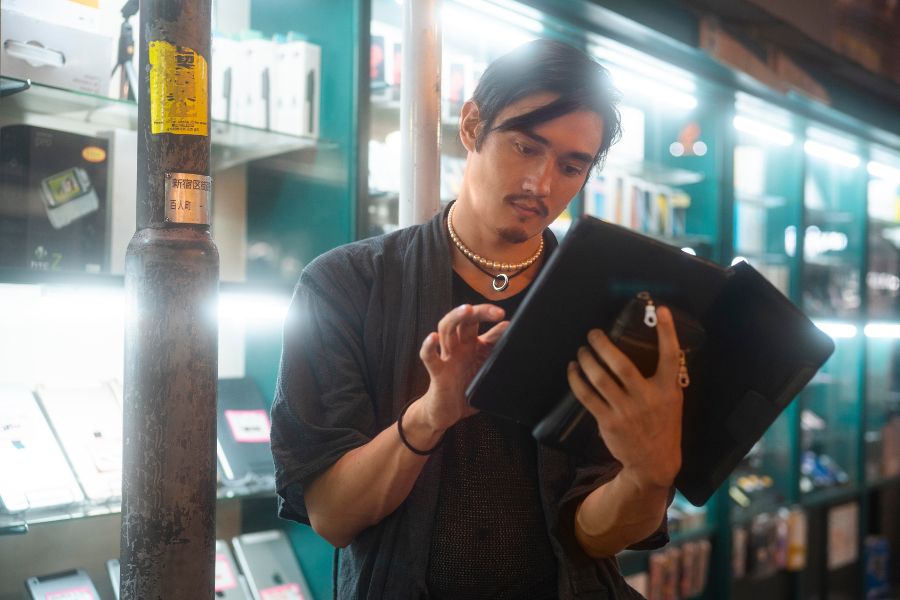As the retail landscape swiftly transitions from in-store transactions to digital platforms like mobile phones and laptops, the convenience and efficiency of online shopping continue to capture consumer interest. In 2022, half of the orders in the US were placed online, and this trend isn’t going to slow down. The allure of online shopping isn’t just the comfort of making purchases from home—it often surpasses the traditional in-store experience in ease and accessibility. At the forefront of this retail evolution are 10 pioneering brands reaping the rewards of their savvy e-commerce approaches, all anchored by robust omnichannel strategies.
But what exactly is omnichannel retail, and how has it become a cornerstone of success for e-commerce operations? This article delves into the world of omnichannel brands, showcasing 10 industry leaders who are mastering the art of omnichannel presence to fuel their growth.
What is Omnichannel Retail?
Omnichannel retail represents the cutting edge in harmonizing customer experiences across multiple platforms in both retail and eCommerce. It’s about delivering a cohesive customer journey, whether they interact with a brand through mobile apps, websites, physical stores, or any other channel.
The omnichannel approach goes beyond providing service on numerous platforms; it aims to enhance customer engagement with the brand by elevating the quality and accessibility of service across all touchpoints.
To achieve a truly seamless customer experience, omnichannel retail integrates various channels, ensuring that whether a customer is shopping from their smartphone, laptop, or within a physical store, the transition is fluid. Communication channels like emails, social media, phone support, and online shopping features such as wish lists and shopping carts are all unified under a single omnichannel ecosystem.
The core of effective omnichannel retail is an unwavering commitment to the customer experience, placing it at the heart of a business’s operations. While customers may not always recognize when they’re engaging with an omnichannel brand, the exceptional service, heightened personalization, and frictionless purchasing process make a lasting impression.
Omnichannel retail turns casual shoppers into devoted patrons by offering convenience, enabling them to access and purchase products effortlessly across their preferred channels.
Embracing omnichannel retail yields significant benefits, enhancing brand loyalty through consistent, personalized experiences across all channels. It offers actionable data insights for targeted marketing and efficient inventory control. This approach not only meets modern consumer expectations for convenience and flexibility but also drives strategic business decisions, potentially boosting sales and cutting costs, thus placing brands at the leading edge of customer-focused commerce.
The Difference between Omnichannel and Multichannel
It’s easy to mistake multichannel for omnichannel, but there’s a critical distinction that could redefine your business strategy and customer engagement. Understanding this difference is key to evolving with a customer-centric focus.
- Multichannel: This approach refers to the use of various channels for customer interaction, such as physical stores, websites, and mobile apps. However, these channels tend to operate in silos, lacking cohesion. This disjointed approach can lead to inconsistent messaging and customer experiences. For instance, a multichannel retailer might offer purchasing through different platforms but fail to integrate online ordering with in-store pickups or synchronize loyalty rewards across all channels.
- Omnichannel: Omnichannel represents an advancement of the multichannel concept. It interconnects every channel to deliver a unified and seamless customer experience. In an omnichannel model, customer data and interactions are synced across online and offline platforms, enabling personalized engagement strategies. If a customer shows interest in a product online, the omnichannel approach strategically leverages this data to enhance their experience on another channel.
| Multichannel | Omnichannel | |
| Sales | 2-3 separate sales channels, with different sales strategies for each channel. Customers must actively seek out sales channels to be able to purchase their preferred product. | All sales channels are connected for seamless integration of customers’ preferences. All sales channels are immediately available. Customers are incentivized to make purchases for their preferred product regardless of channel. |
| Marketing | Each channel requires a different marketing strategy, with no way of optimization for leads. | Cross-channel marketing is possible because customers’ interests and platform preferences are shared between channels. Marketing optimization is easier for rewards programs and personalized campaigns. |
| Order Management | Orders made on different channels must be manually inputted and are prone to human errors and time delay. | Orders are instantly updated between channels, reducing operational costs and saving time. |
| Inventory Management | No real-time synchronization for data entry. Not scalable for bulk orders, parts suppliers, or B2B retail with multiple channels. | Real-time cross-channel inventory synchronization reduces operational costs and opens up possibilities for large-scale omnichannel purchases. |
Business2Community highlights that 60% of millennials demand consistent interactions across all channels, whether online, physical, or otherwise. To get a clear picture of what successful omnichannel execution looks like, let’s explore 10 leading brands that are excelling with their customer-centric omnichannel strategies.
Top 10 Brands that are Winning with Omnichannel
In today’s digital marketplace, omnichannel strategies have become a game changer for brands aiming to deliver a seamless customer experience across multiple touchpoints. Leading companies are integrating their physical stores, e-commerce platforms, mobile apps, and social media to create a unified shopping journey that enhances convenience, personalization, and customer engagement.
Here are 10 leading brands that are excelling at omnichannel retailing. Discover how these companies are leveraging technology, data-driven insights, and customer-centric approaches to dominate their industries and redefine the future of commerce.
STARBUCKS
Starbucks is one of the top companies that provide the best Omnichannel experiences. The coffee giant already had 28,000 physical stores with 75 million monthly customers, but they have taken its sales to a new level after expanding its Omnichannel strategy.
Starbucks’ loyalty program offers new members a free drink, which has helped the company gain 10 million digitally registered customers. The program’s mobile app provides customers with reward points for every purchase and also offers personalized recommendations based on their previous orders. These recommendations are displayed on the menu and can be further customized by customers.
Furthermore, since everything is integrated, shoppers can always reload their cards via phone, website, in-store, and on the app. Every transaction order or add-to-cart gets updated across all channels in real time. The key to Starbucks’ success in omnichannel is its focus on making customers’ purchasing experience as seamless as possible. This is thanks to a fast omnichannel POS system, which makes cross-integration for order management, rewards programs, and personalized marketing possible.
SEPHORA
Sephora is one of a few companies that soon realize their customers are facing a significant difficulty: Shoppers have a variety of selections to choose from regarding beauty cosmetics. For example, a quick search of “Foundation” can bring up over 550 results with different colors from various brands.
After identifying the case, Sephora immediately turned its system into Omnichannel, which perfectly suits its goal of always putting customers on top. Sephora has made numerous changes to satisfy their customers’ shopping experience:
- Multiple tablets are placed in stores that integrate with their online app and website.
- Customers can easily and efficiently look up item details and virtually try them on with the new technology applied by Sephora.
- Suggestions for certain customers are made based on their history search, which is a great way to build customer loyalty.
- The Augmented Reality Fitting Room and the Beauty Section in Sephora enable consumers to imagine how certain items may look on themselves.
NIKE
Nike, an American multinational corporation that has always been the pioneer in digital trends, has set itself some incredible goals with Omnichannel.
In 2017, Nike owned a total of 1,142 retail stores throughout the entire world. And because of that, the inventory system immediately became chaotic and hard to control. But the company didn’t let it interfere with them for long because right after the problem happened, they soon applied Omnichannel into the system to manage and tidy up their inventory and backend. This resulted in an impressive sales boost for Nike.
After handling the inventory, Nike established the Nike App. It immediately becomes a real asset to the brand: Inventory and data are capitalized in real-time, and shoppers are recognized as soon as they enter stores, allowing them to scan for product availability and check out without waiting in line (This function has only been available in 30 stores around the US, UK and they are planning to scale up within the next 12 months).
Another digital invention is Nike Fit, which allows customers to size their footwear correctly without going to stores and trying them on. This has effectively shown how much the company cares about its shoppers and immediately gains their hearts. Furthermore, Nike’s checkout process is full of customer-first initiatives such as promo codes from KOLs, pick-up from local stores (location tracking), and rewards point spending, all made possible by their omnichannel POS system.
TARGET
The retail giant has proved itself to be worthy of the title “The largest discount retailer in the United States”. With the aim to provide shoppers with the same great experience whether they are in stores, on the web, or on a mobile device, Target has been investing a large amount of money in Omnichannel. They have been using mobile, not only to deliver discounts but also to solve problems for their customers such as navigating their way around large stores with in-store maps, as well as creating integrated shopping lists.
By the same token, Target’s curbside program and BOPIS (Buy online pick up in-store) are expanding to nearly 1,000 of its 1,822 domestic stores, which led to a 10% increase in week-over-week orders. With this new program, shoppers can place an order via the Target app and drive to the location of a Target Store. After that, a Target associate will be there to deliver the goods straight to their car.
TOPSHOP
Topshop is a UK-based high-street retailer that offers both women’s and men’s on-trend products. They are on their way to making their Omnichannel as seamless as possible.
This fashionable clothing brand brings the most out of its digital side by showing great magazine content, trendy lookbooks, and the latest fashion tips on their websites and mobile devices. Along with that, their Topshop On The Go app also works like a charm in which users can scan a barcode and immediately see nearby store locations and their best sellers as well as available stock.
Not only does Topshop provide a fantastic user experience across their mobile devices, but they also bring a fresh new taste of fashion by displaying 6 billboards in London, Manchester, Leeds, Birmingham, Liverpool, and Glasgow which feature pictures whenever a Twitter account uses their hashtag “#LFW”. And the best thing is, all the billboards were within a 10-minute walk of a Topshop store. After the glamorous show, the company reported a 25% increase in its sales across all categories featured on the billboards.
AMAZON
Amazon has brilliantly adapted to Omnichannel by incorporating all of their grounds together and creating a seamless experience for customers whether they are online or in stores.
Amazon focuses on the customer experience. They use data to create personalized, responsive interaction across all channels. It includes connecting customer data, and fulfilling customers’ wants in whichever channel they prefer.
When it comes to applying Omnichannel to delivery, Amazon is the true game-changer. By spending years and millions of dollars on the delivery system, the company has made it possible to bring up one-hour Prime Now delivery in many markets and same-day or next-day delivery available on millions of products. This has incredibly met the needs of customers since they all want to lay hands on their orders as soon as possible.
IKEA
IKEA is now leveraging its technology and innovation across all channels including mobile, website, and in-store experience.
The company is approaching Omnichannel with its mobile functionality which allows users to view and select their favorite items in a shopping list. By adding up items, the app also informs the shoppers exactly where in the store to pick up that item since they can easily get lost in many of IKEA’s staged showrooms
In addition, they are infusing VR technology with a feature called “Place in Your Room” that allows users to virtually place and view nearly 300 IKEA products in their own homes. This gives shoppers a clear 360-degree view of how the item fits into their house and other furniture, which has been a great help to shoppers who can’t decide on which items to purchase.
GAP
GAP is doing a great job of bridging the gap between the digital world with its brick-and-mortar stores.
In 2017, Gap Inc. began equipping store associates with mobile devices to enable better customer service on store floors. The brand also uses devices and mobile printers to complete customers’ transactions, therefore, shoppers no longer need to wait in line to open store credit cards, pay for items, or place home delivery orders.
Inside the stores, wall-mounted Android devices are equipped with scanners so that customers can read reviews, find additional sizes and colors as well as check the prices and have them shipped home. Some of the devices are even placed inside dressing rooms to create a personalized shopping experience.

BED, BATH AND BEYOND
“During the first quarter, comparable sales consumed through customer-facing Websites and mobile applications grew in excess of 35%, while comparable sales consummated in stores were relatively flat.” CEO Steve Temares said. This has illustrated how great of an impact Omnichannel has made on Bed, Bath and Beyond.
The company is focusing on speeding up its website and mobile flow as well as curbside pickup features. In addition to that, they are creating more flexible options to deliver orders more quickly and effectively. A feature called Shop now ship later has been launched which allows customers to purchase their favourite items first and have them delivered in a certain time.
Not to mention, earlier this year, the company introduced a selection of back-to-school merchandise on Bed Bath & Beyond Website which contains information that helps students plan for what they need while away at school. Not only does this program help to create personalized experiences for students but also results in an impressive boost in sales for the company.
VALUE CITY FURNITURE
Value City Furniture is a 60-year-old furniture retail chain with 118 stores across the country. Even though the company is in a large scale, it is still working on a seamless system and building personal relationships with customers.
Connecting brick-and-mortar stores with digital tactics has made transactions in Value City Furniture much more comfortable for its shoppers. So the process goes like this: Customers browse online first, create a cart and then go into a store, employees at the physical location can pull up that customer’s selections and show it to them. After carefully viewing the item, customers can decide whether to purchase it or not and even have it delivered home for them.
By partnering with Cloudtags, an Omnichannel data platform provider, the brand is now able to identify in-store shoppers who have left stores without making a purchase and re-engage them digitally through emails, ads, and other formats. This program has made a big impact on the company’s sales and successfully drove customers back to the store again.
Take the dive into Omnichannel with ConnectPOS
Following the insights from the top 10 brands leading the trend with omnichannel retail, it becomes evident that a dynamic Point of Sale (POS) system is crucial for replicating such success. An advanced POS system transcends its traditional role as a mere checkout point to become the cornerstone of omnichannel integration. It plays a pivotal role in weaving together various sales channels, customer interactions, and inventory management processes into a unified, seamless retail experience.
Building on this foundational necessity, ConnectPOS emerges as a significant player in the omnichannel landscape. With its advanced features and intuitive design, ConnectPOS extends beyond traditional POS capabilities. It offers real-time synchronization of inventory and sales, a unified view of customer profiles, and the ability to cater to customers’ needs across all touchpoints.
ConnectPOS is designed to empower retailers to offer a seamless shopping journey, reflecting the kind of integrated and customer-centric approach that today’s consumers have come to expect. By deploying ConnectPOS, retailers can ensure that their omnichannel strategy is not just a concept but a practical, customer-pleasing reality.
If you want to see ConnectPOS in action or require more information about the solution, don’t hesitate to contact us!



